Just outside of the Ringstrasse in Vienna, Austria, is arguably the most famous palace in Austria, the Belvedere. This complex was also one of the first art galleries open to the public in Europe since 1776 based on Enlightened Absolutism.
The complex is so impressive Sophia Coppola used it in her movie, Marie Antoinette, as a stand in for Antoinette's childhood home, more properly Schonbrunn. I also visited Schonbrunn on my trip and can attest that the Belvedere, while smaller, is a much more beautiful palace.
Sitting high above the historic center of Vienna the view has not changed much since the 18th century when Canaletto captured it in the above painting (1758) - compare my photograph with the painting; a few more trees and thats all.
The main event of the palaces however is not the architecture but the baroque gardens. Dominique Girard, who had worked earlier at Versailles, designed the gardens here with flowing fountains and intensely planted beds which are now unfortunately grassed over.
On the uphill side of the palace, oddly facing away from town, is the front entrance with a lovely glassed in porte cochere.
Work began in 1712 under architect Johann Lukas von Hildebrandt as the country residence of Prince Eugene of Savoy. While the surrounding area was countryside at the purchase of the property in 1697 it was surrounded by development only a few years later and the Prince was forced to buy more land in order to preserve his city views.
Rather than my snapshots taken on such a gloomy day (my entire 4 day trip to Vienna was rainy!) I thought I'd share more professional photography from Wikipedia. Above is the entrance facade.
The lower Belvedere remained a royal residence for much longer than the upper Belvedere, becoming home to a host of discarded Royals fleeing the French revolution including Marie Antoinette's daughter, Marie Therese. Below is the lower Belvedere seen from the terraced gardens.
The Lower Belvedere also became a public museum in 1811 when it was used to house the Imperial Collection from Ambras Castle when the Habsburg's lost Tyrol to Bavaria.
And another better image on a lovelier day from Wikipedia.
The baroque gates into the complex are impressive.
Public entrance into the park is through a lovely wing of the lower Belvedere seen below.
As this is now a busy residential part of the city many people use the park to walk their dogs or jog.
Of course all royal residences had connections to a Catholic church. Seen below is the backend of the cloisters of Maria Heimsuchung and the Salesianerinnenkirche (say that 3 times fast).
Not a bad little church at which to say your prayers.
The church boasts a famous organ by Elias Hossler and a lovely baroque facade by Italian architect Donato Felice D'Allio.
Even on a cloudy day the gardens were delightful, particularly the fountains and statuary.
Click on the photo in order to view these larger.
This is however a working art museum so modern sculptures have been inserted into the landscape as well.
Badly damaged during WWII both palaces and the gardens have been expertly reconstructed.
This part of the upper Belvedere housed a lovely restaurant which I recommend!
The restaurant faces out towards a highly stylized apple orchard with lovely teahouse.
I had to share the sign below which caught my eye....I suppose as a meeting point for groups but it was a bit odd and took me ages to figure out what it meant. Of course the many 'stay off the lawn' signs send a mixed signal with this meeting point.
The Belvedere was one of my favorite spots in Vienna and I hope you take the time to visit someday! More information here.
Subscribe to:
Post Comments (Atom)



















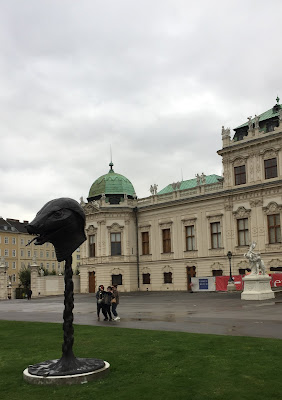














































.JPG)



























































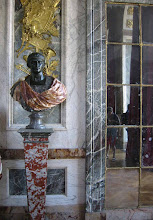


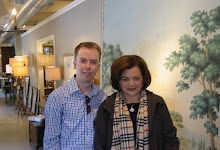






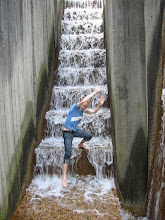

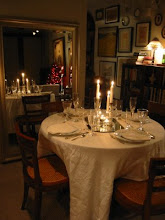
3 comments:
What an amazing place -- raining views aren't bad at all!! The open majesty of it is spectacular. --- hope you had the best time there.
Thank you !!
Thank you. Very interesting. By the way the green square sign with people on it is a fire rendezvous sign indicating for staff and visitors to gather in an emergency.
Post a Comment